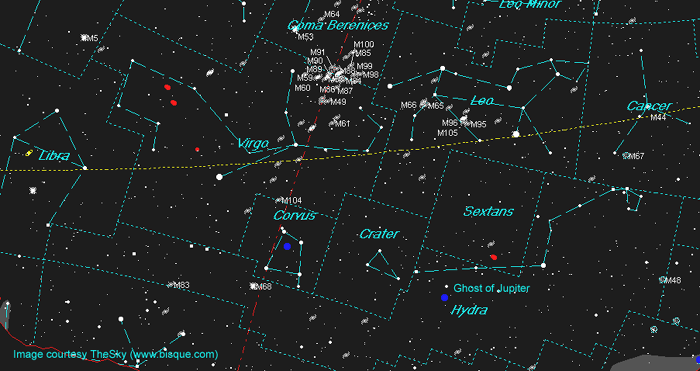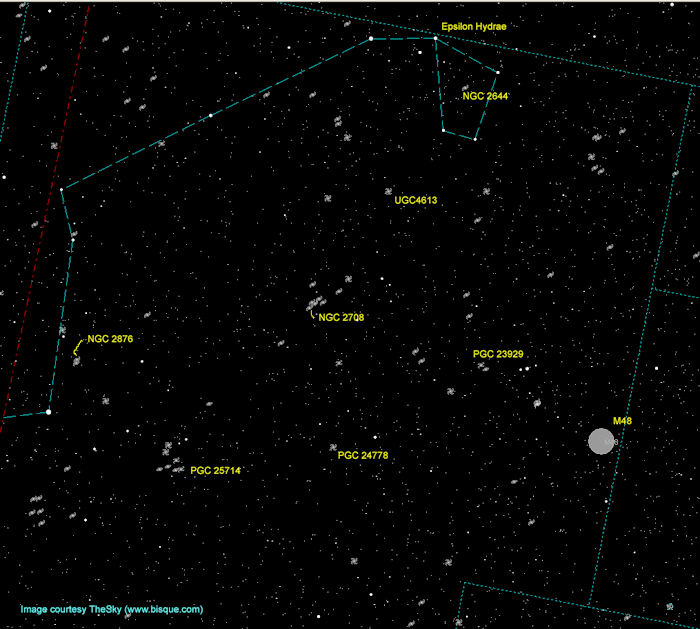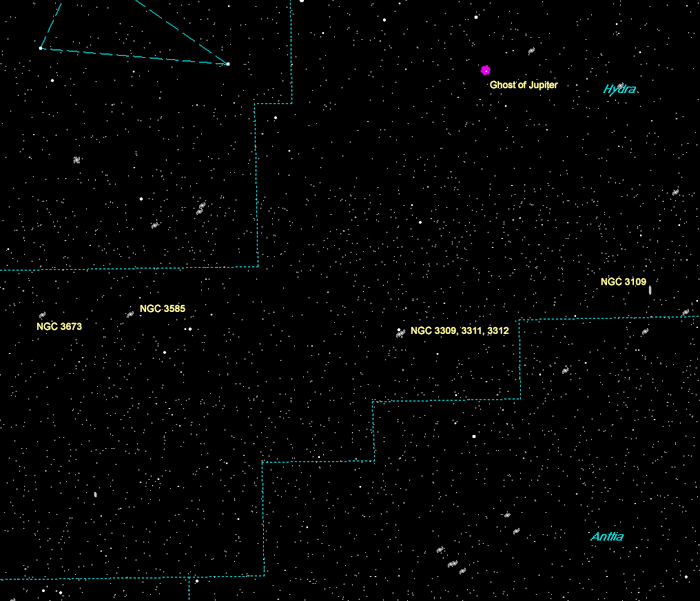Hydra The Water Serpent
To the average person, the night sky is a collection of simple dots, some bright while others dim. In elementary school, the general science class touched on the very basics of astronomy. We had leaned the major constellations like the Big Dipper, studied stars in general like our Sun as well as our four earthly seasons. It began with my science teachers and a book called Stars that ignited my love for astronomy at the tender age of eight.

Early astronomy saw the birth of mythology which were fictional stories of people, animals, monsters, objects and even Gods and have been around for a few millennia. Today’s modern astronomy has a collection of 88 constellations between both hemispheres and is a combination of old and new star patterns. The smallest constellation goes to Crux located in the far south at -60 degrees declination and is impossible to see from Canada. On the other end is the scale we have Hydra the Water Serpent which is our target for this month. The Serpent measures 100 degrees in length and owns 1,303 square degrees of celestial real estate compared to Crux at 68 square degrees.
Starting from under Cancer and slinking southeast till it meets up with Libra, Hydra has a bit of everything. Let’s first start at the very top of the Serpent’s head. Epsilon Hydrae is a yellow-white G5 giant star located 129 light-years away. At magnitude 3.4 it is the brightest of a five-star system. Moving south by about 15 degrees from the creature’s head, we come across an open cluster that lies very close to the Monoceros border. This is M48 and should be spotted with the unaided eye from a dark site. Estimated distance of 1,500 light-years and a magnitude of 5.5, M48 appears larger than the full moon and about 50 suns should be glimpsed with small binoculars.

Next, we will look at a few galaxies calling Hydra home. Move your scope about nine degrees to the east of M48 till you come upon PGC 24778 which is a small spiral measuring 1.5 by 0.9 arc minutes. With the combination of small size and magnitude 13.9, makes this a challenging object to observe. A tight group of galaxies are labelled NGC 3312, 3311 and 3309. At 150 million light-years away, NGC3312 is the closest of the trio and it glows at magnitude 11.9. This spiral measures 3.3 by 1.2 arc minutes and possesses a bright core. Next in the middle, we have NGC 3311 residing at 165 million light-years. It is an elliptical galaxy with a magnitude value of 11.6 and measures 2.3 by 2.1 arc minutes.
Ending out the trio is NGC 3309 at 180 million light-years away. Needless to say the elliptical appears smaller because of its distance. It measures 1.9 by 1.6 arc minutes but also has a magnitude of 11.6. As we move to the eastern portion of Hydra, look for M83. This barred spiral galaxy is listed at magnitude 7.6 and lies some 15 million light-years from us which marks it as one of the closest galaxies to us.

If you are living along a path from Algonquin Park through Kingston and down in New York State, mark your calendars for the night March 19. Here you will get the opportunity to catch the star Regulus disappear. This is a rare event as asteroid 163 Erigone occults the star and interrupts its light for as long as 14 seconds. The rare sighting of this dark 73 km wide asteroid is scheduled to begin at 2:05 EDT on the morning of March 20th.
Jupiter is well up in the eastern sky at sunset and nicely situated in Gemini. The King of Planets completes it retrograde (westerly motion) on March 4th after which it resumes its easterly path and eventually exits Gemini on July 7th. The red planet Mars rises along with Spica around 10 p.m. at the beginning of March and will be some 115 million km from us. Its magnitude is currently -.50 and continues to approach us till opposition date listed for April 8th where it will brighten to magnitude -1.5. About three hours later Saturn is up in the SE sky and will appear Close to the Moon on the 21. Africa will witness an occultation of Saturn and the Moon on that day.
Daylight Saving Time begins at 2 a.m. on the morning of March 9 in most time zones. This, of course, means we begin observing an hour later after this date and hopefully, Eleven days later we ring in Spring on the 20th at 16:57 UT. Now we see daytime hours exceeding night hours and hopefully the end of a long cold and snowy winter.
Lunation 1128 marks the start of the new lunar cycle on March 1 at 8:00 UT and the full Worm Moon occurs on the 16th at 17:08 UT when our distance will be 396,403 km. Because of the Moon’s 29.53 day synodic period, lunation 1129 (New Moon) will occur on the 30th at 18:45 UT. For the next two weeks commencing a few nights after full phase, look to the west after sunset for the zodiacal lights. Dark skies are a must to see this elusive faint light, the dust particles of our solar system. The lights can be glimpsed in the west during spring and the east during autumn.
Until next month, clear skies everyone.
